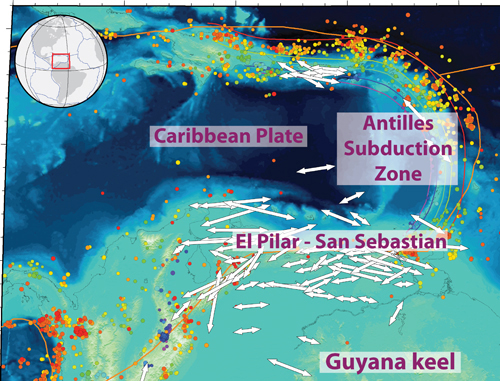
Tectonic Shoving Match Formed Caribbean Island Arc

The movement of Earth's viscous mantle against South America has pushed the Caribbean islands east over the last 50 million years, according to a study published Monday (Aug. 20) in the journal Nature Geoscience.
The University of Southern California, in announcing the study, said the findings upend previous hypotheses of the seismic activity beneath the Caribbean Sea and provide an important new look at the unique tectonic interactions that are causing the Caribbean plate to tear away from South America.
The Caribbean plate is being pushed eastward due to a thick section of the South American plate called a "cratonic keel." This section of crust is three times thicker than its surroundings.
Meanwhile, part of the South American plate is being pushed beneath the Caribbean plate, a process called subduction. Intense heat and pressure gradually force water-containing magma to rise into the Earth's mantle and fuel the many active volcanoes in the region.
All of this pushing and pulling formed the distinctive arc shape of the Caribbean islands and has created a very complex system of faults between the two plates, in northern South America, according to the USC statement. The study mapped several of these strike-slip faults, which are similar to California's San Andreas Fault.
Recent earthquakes in the area helped the two researchers develop an image of the Earth's deep interior. The earthquake waves move slower or quicker depending on the temperature and composition of the rock.
"Studying the deep earth interior provides insights into how the Earth has evolved into its present form," researcher Meghan S. Miller said in the statement.
Sign up for the Live Science daily newsletter now
Get the world’s most fascinating discoveries delivered straight to your inbox.
For their study, the researchers used earthquake data to develop 176 computer models, USC said.
Follow OurAmazingPlanet on Twitter @OAPlanet. We're also on Facebook and Google+.











